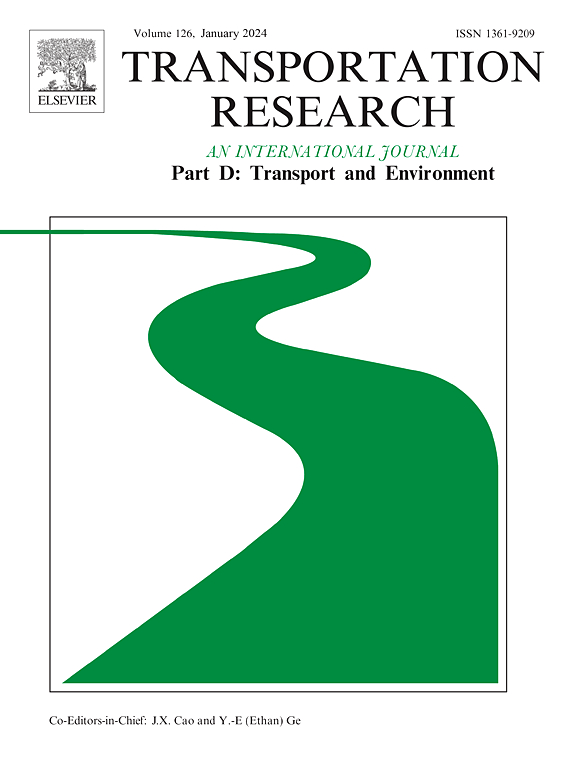Deep learning-based long-medium prediction of Chinese new energy vehicle sales and air quality towards 2035
IF 7.7
1区 工程技术
Q1 ENVIRONMENTAL STUDIES
Transportation Research Part D-transport and Environment
Pub Date : 2025-09-20
DOI:10.1016/j.trd.2025.105002
引用次数: 0
Abstract
Accurately forecasting new energy vehicle (NEV) sales carries significant policy and strategic implications. This study proposes a deep learning framework to assess policy incentive intensity for NEV and employs natural language processing techniques to quantify media sentiment index. A deep learning algorithm named P-PLSTM is developed, and Monte Carlo simulation and scenario analysis are embedded, constructing a dynamic scenario forecasting model. It predicts the dynamic development trajectories of Chinese NEV sales and the corresponding air quality between 2024 and 2035 under different scenarios. The results indicate that, compared to traditional machine learning models and commonly used LSTM-based deep learning models, the P-PLSTM model achieves higher predictive accuracy for Chinese new energy vehicle sales, with an R2 of 0.98. Under current conditions, NEV sales exhibit a steady upward trend, surpassing 15 million units by 2030 and reaching 21.29 (±2.87) million units by 2035. With the increase in NEV promotion, the concentrations of major pollutants exhibit a declining trend. By 2035, the atmospheric concentrations of NO2 and PM2.5 are expected to decrease by 10.38 and 7.17 %, respectively.
基于深度学习的2035年前中国新能源汽车销量及空气质量中长期预测
准确预测新能源汽车(NEV)销量具有重要的政策和战略意义。本研究提出了一个深度学习框架来评估新能源汽车的政策激励强度,并采用自然语言处理技术来量化媒体情绪指数。开发了深度学习算法P-PLSTM,嵌入蒙特卡罗仿真和场景分析,构建了动态场景预测模型。预测了2024 - 2035年不同情景下中国新能源汽车销量及相应空气质量的动态发展轨迹。结果表明,与传统机器学习模型和常用的基于lstm的深度学习模型相比,P-PLSTM模型对中国新能源汽车销量的预测精度更高,R2为0.98。在当前条件下,新能源汽车销量呈稳步上升趋势,到2030年将超过1500万辆,到2035年将达到2297万辆(±287)。随着新能源汽车推广力度的加大,主要污染物浓度呈下降趋势。到2035年,大气中NO2和PM2.5浓度预计分别下降10.38%和7.17%。
本文章由计算机程序翻译,如有差异,请以英文原文为准。
求助全文
约1分钟内获得全文
求助全文
来源期刊
CiteScore
14.40
自引率
9.20%
发文量
314
审稿时长
39 days
期刊介绍:
Transportation Research Part D: Transport and Environment focuses on original research exploring the environmental impacts of transportation, policy responses to these impacts, and their implications for transportation system design, planning, and management. The journal comprehensively covers the interaction between transportation and the environment, ranging from local effects on specific geographical areas to global implications such as natural resource depletion and atmospheric pollution.
We welcome research papers across all transportation modes, including maritime, air, and land transportation, assessing their environmental impacts broadly. Papers addressing both mobile aspects and transportation infrastructure are considered. The journal prioritizes empirical findings and policy responses of regulatory, planning, technical, or fiscal nature. Articles are policy-driven, accessible, and applicable to readers from diverse disciplines, emphasizing relevance and practicality. We encourage interdisciplinary submissions and welcome contributions from economically developing and advanced countries alike, reflecting our international orientation.

 求助内容:
求助内容: 应助结果提醒方式:
应助结果提醒方式:


